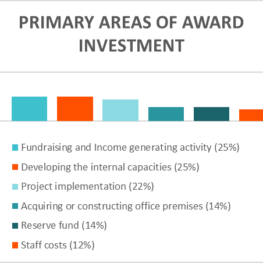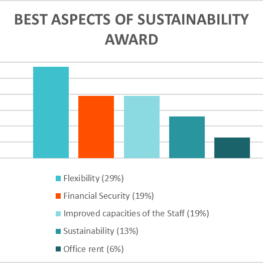The majority of non-profits have a common struggle of securing funding from donor organizations and trying not to have any financial gaps, typically when a partnership with a donor organization is over.
To mitigate this challenge with its grantee partners, Global Fund for Children created The Sustainability Award, which is named in honor of its founder, Maya Ajmera. The Sustainability Award is usually GFC’s final investment in some of its highest-performing partners during the final year of the primary grant funding relationship. Though GFC received some feedback on the award since the first award in 2005, the information was not collected, stored, and analyzed in a systematic and consistent manner.
 As an Atlas Corps fellow, I was happy to conduct an impact review of this award, which was a very interesting and unique opportunity for me to connect GFC’s grantee community and elevate their voices and opinions on the long-term impact of the Sustainability Award on specific aspects of recipients’ organizational development.
As an Atlas Corps fellow, I was happy to conduct an impact review of this award, which was a very interesting and unique opportunity for me to connect GFC’s grantee community and elevate their voices and opinions on the long-term impact of the Sustainability Award on specific aspects of recipients’ organizational development.
144 organizations from 48 countries were funded, which makes $3.8M, and I collected feedback from 77 organizations and 98% of respondents found the award extremely or very helpful. 25% of respondents used the award on fundraising and income generating activity, another 25% developed team capacities and 22% used the fund for current projects. The grantee partners reported the most improvement in planning and networking. The majority of respondents appreciated the flexibility of GFC’s support, as well as the financial security and improved capacities ensured by the award. According to 38% of organizations, there is no need for improvement to the Sustainability Award, yet a number of organizations provided valuable recommendations for to enhance its impact.
The recommendations based on grantee partners’ responses are summarized in 5 main points:
 1) Keep it flexible—flexibility and autonomy are crucial to the award’s success.
1) Keep it flexible—flexibility and autonomy are crucial to the award’s success.
2) Increase funding—the need for operational funds remains high.
3) Extend the grant period—allowing more time for guidance, implementation, and improvement.
4) Enhance coaching—by providing strategy development, technical support, feedback mechanisms, and other services.
5) Leverage the award—to additional funders, media, and peer organizations for maximized support and visibility.



